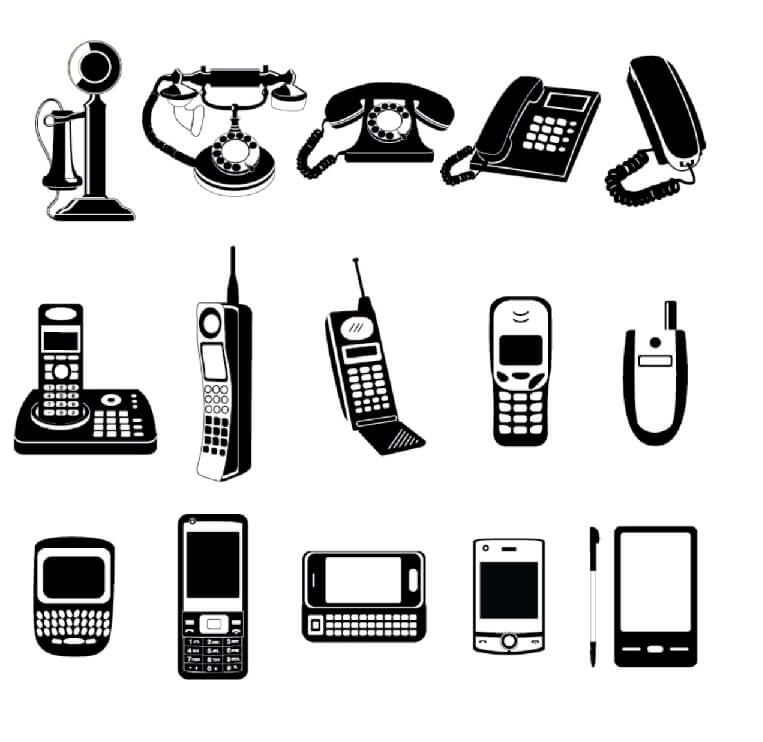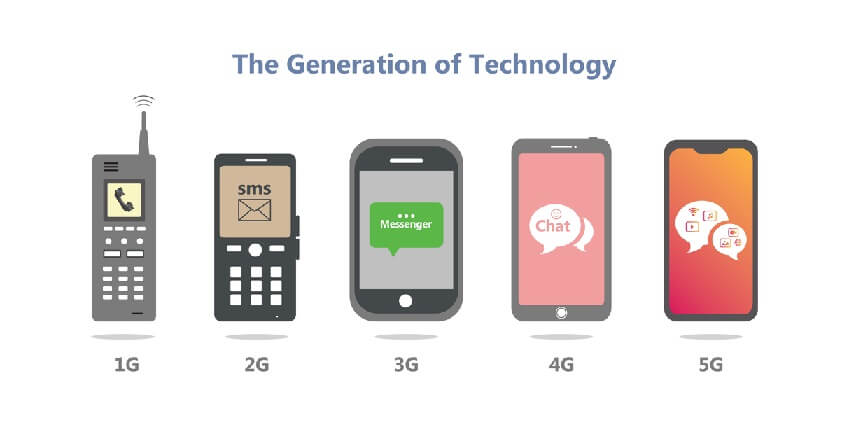In the 21st century, technology is the order of the day. It has improved to the point where everyone can now readily access the world through smartphones. However, this has not always been the case. There was a time when what we had phones that were far behind, compared to what’s available today.
Phone technology has evolved through the years, from the first phone invented solely for the purpose of easy call making to what we now call as smartphones. As the name implies, smartphones are a type of mobile phones with multiple computing abilities, capable of running software applications and equipped with an extensive operating system that allows for computing skills.
The transition from the cell phone era to the era of the smartphone did not just happen overnight. To understand this process, continue reading below to see the different stages of phone evolution.
The Cell Phone Era
Before the advent of phones in the history of humanity, the only means of communication were through letters, cable telephones, and then radiophones.
After the radiophone, the first real cell phone made an actual call in 1973. An invention by Martin Cooper of Motorola, the first phone was pretty heavy, weighing about about 2.4 pounds and had a shape that looks like a brick. The cell phone came to life only after a 10-hour charge and worked for a 30-mins call between Martin and Dr. Joel Engel, who was an engineer at Bell Labs, a rival company of Motorola.
As much as the cell phone was a new invention with a lot of possibilities, it was still slow in operation and limited in range as it had a 1G analog network. The challenges were a call to upgrade, and this led to the 2G network, which allowed not only calls but also text messages. As a result of this breakthrough, the first text message sent was in 1992.
The 2G network ushered Nokia into the cell phone game. By 2000, The Nokia 6000 was introduced into the market. Unlike its predecessor, it was smaller, lighter, and had features for making calls, messaging, and also for playing games. As it was also cheaper, it became an accessory meant for business enterprises, like Call Cowboy, the government, and to all.
The 2G was good, but people wanted more. The market was moving, and the competition was rising. Eventually, the 3G network was introduced towards 2001-2002. A new era for cell phones had arrived. Not only could the former functions be used, but there were also features on the new phone.
Some of these new features include added speed, as 3G could transmit data at broadband speed. This means that internet access was already included to browse websites and surf online. In addition to that, the ability to stream audios and videos also becomes possible thanks to network efficiency.
A popular release at this time was Motorola Razr, along with Blackberry, which became the foremost in the phone enterprise because its products had a mixed feature of a phone and an emailing machine.

The Smartphone Era
Steve Jobs took over the market by 2007 when he brought in the iPhone. The iPhone has a pad-free, touch screen with a virtual keyboard, digital music player, internet-enabled, a 2MP camera, a bigger memory space, and the usual features of calling, texting, gaming, and emailing in one single tiny creation.
After that, the phone game was never the same again. The technology base had expanded beyond the first brick phone. Android came after iPhone as a competition, and this brought about the first Android phone in 2008 by HTC, and the technology in it was fine-tuned in 2009 by Motorola Droid on Verizon.
The iPhone vs. Android phone battle was not only in terms of the device, but also the components. iPhone launched its App Store with 500 applications for use on the device, and Android followed suit with 50 apps for its online application store.
Other Android phones soon began to follow suit, with removable batteries, increased number of incorporated and running applications, better camera quality, bandwidth speed, voicemails, caller ID recognition features, larger memory spaces, and so on.
Launched by Verizon in 2011, the 4G came in as 4G LTE. This meant faster data speed coupled with the WIFI and hotspot features, which not only connected phones to one another but also laptops and computers.
The technological evolutions of phones have been based on improvements and upgrades, in terms of the camera quality, larger memory spaces, faster internet speed, ease of application installation and usage, battery life, connectivity, health features, security, like the fingerprint and face recognition features, and so on.
The phone evolution affect not only phones and phone companies but also the accompanying companies that provide auxiliary services and products for phones, like Drop Cowboy, that provide ringtones. It also changed other network companies, along with application developers, such as WhatsApp, Instagram, Twitter, banking apps, among others.
The need to offer stronger and faster internet access, expand social media outreach, create apps that solve human problems are all dynamics that have shaped this evolution.
Today, there are different types of phones that are developed to suit our everyday lifestyles, such as business, health, fun, communication ease amongst others.
The likes of Samsung and iPhone and others keep technologically evolving every day to provide the sleekest, most elegant, lightest, and super functional phones. As more technological advancements are made, they’re integrated into the mobile IOS, this allows for the incorporation and use of more improved features in today’s phones.
From the very first hefty cell phone of 1973 to the most refined smartphone of today, phone history has experienced a lot of changes. These changes are results of the expanding need and focus on the consumer market with relations to the technological advancement of the era.
Together, these factors have produced countless technologically advanced and futuristic smartphones that are in use today. The future is still looking great as phone developers are relentless in their efforts to move phone technology beyond what it is today.
loading...
loading...

